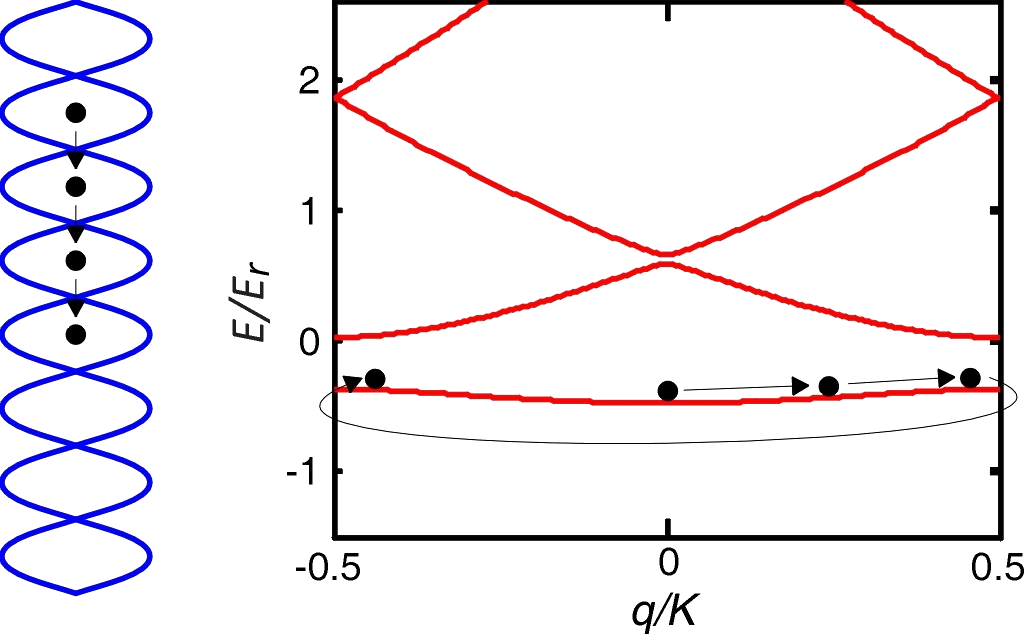 Bloch oscillations of laser-cooled atoms confined in a vertical standing light wave. In modern gravimeters the oscillations are
mapped by measuring the state of the atoms after variable evolution times. The measurement is destructive, and new atomic samples
have to be prepared for every chosen evolution time. In contrast, cold atoms can be made to perform more than 10000 Bloch oscillations
in a single run, so that their nondestructive monitoring would be highly beneficial. To overcome the destructive nature of the
measurements in atomic gravimeters, we propose in this project a novel technique monitoring the Bloch oscillations in-vivo by letting
the atoms interact with a ring cavity. In certain parameter regimes, the backaction of the atomic oscillatory motion onto the phase
and amplitude of the intracavity leads to detectable light bursts, which may serve as a reliable monitor, as we have shown by numerical
simulations published in [Marina04] and
[Marina05].
Bloch oscillations of laser-cooled atoms confined in a vertical standing light wave. In modern gravimeters the oscillations are
mapped by measuring the state of the atoms after variable evolution times. The measurement is destructive, and new atomic samples
have to be prepared for every chosen evolution time. In contrast, cold atoms can be made to perform more than 10000 Bloch oscillations
in a single run, so that their nondestructive monitoring would be highly beneficial. To overcome the destructive nature of the
measurements in atomic gravimeters, we propose in this project a novel technique monitoring the Bloch oscillations in-vivo by letting
the atoms interact with a ring cavity. In certain parameter regimes, the backaction of the atomic oscillatory motion onto the phase
and amplitude of the intracavity leads to detectable light bursts, which may serve as a reliable monitor, as we have shown by numerical
simulations published in [Marina04] and
[Marina05].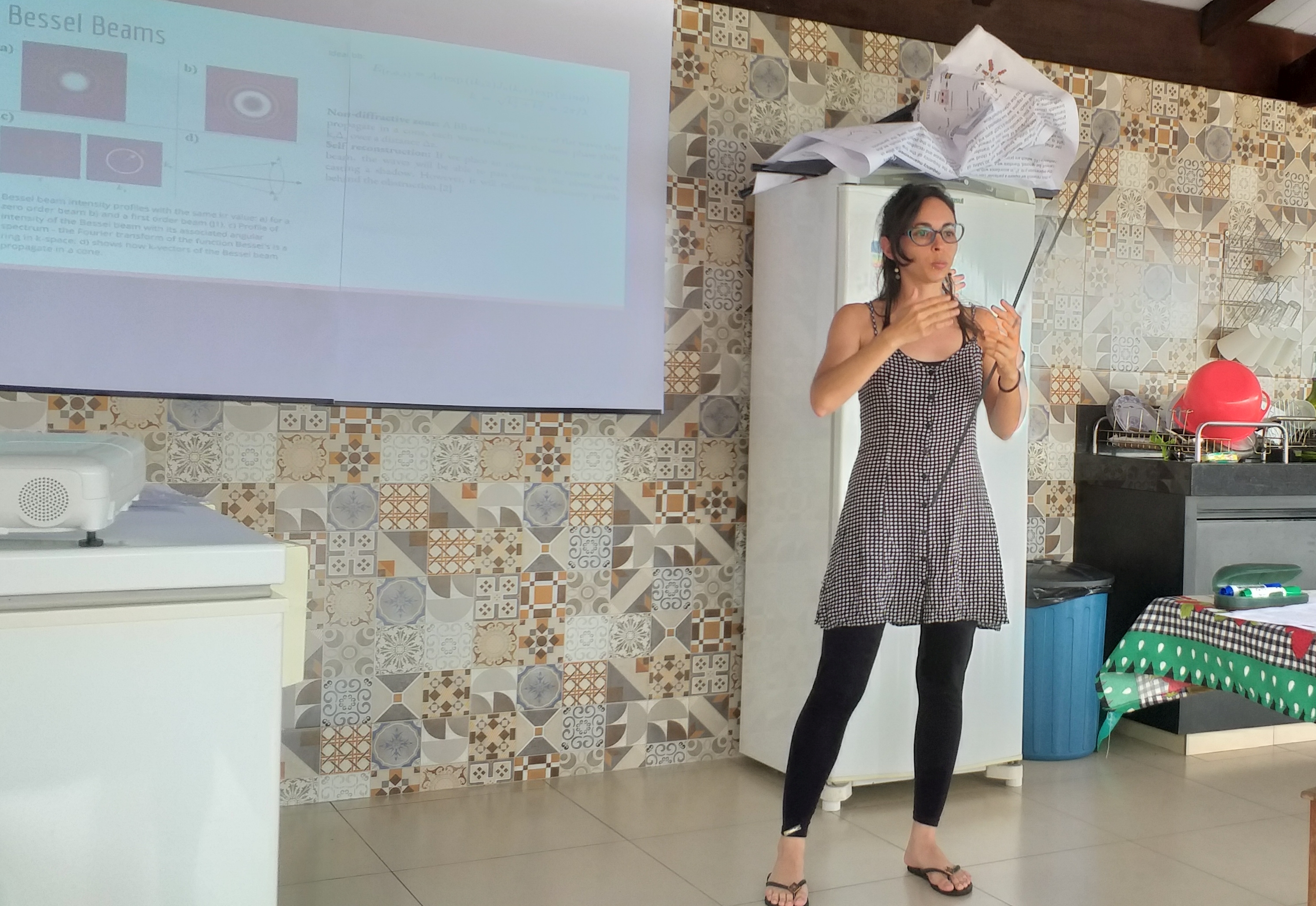
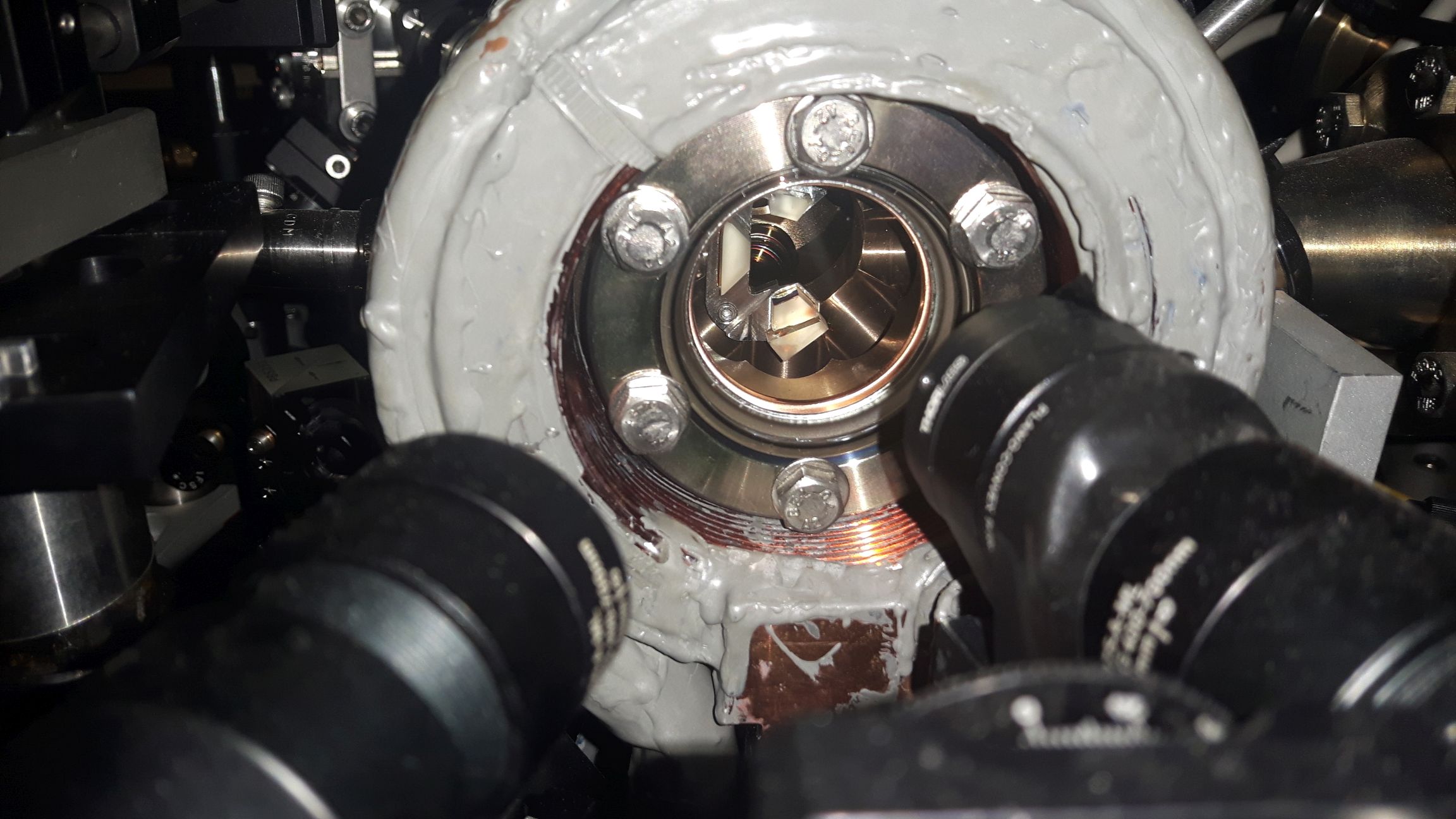 ring cavities and in the trapping and cooling of strontium. Therefore, we started the construction of new experiment aiming at testing
ring cavities and in the trapping and cooling of strontium. Therefore, we started the construction of new experiment aiming at testing
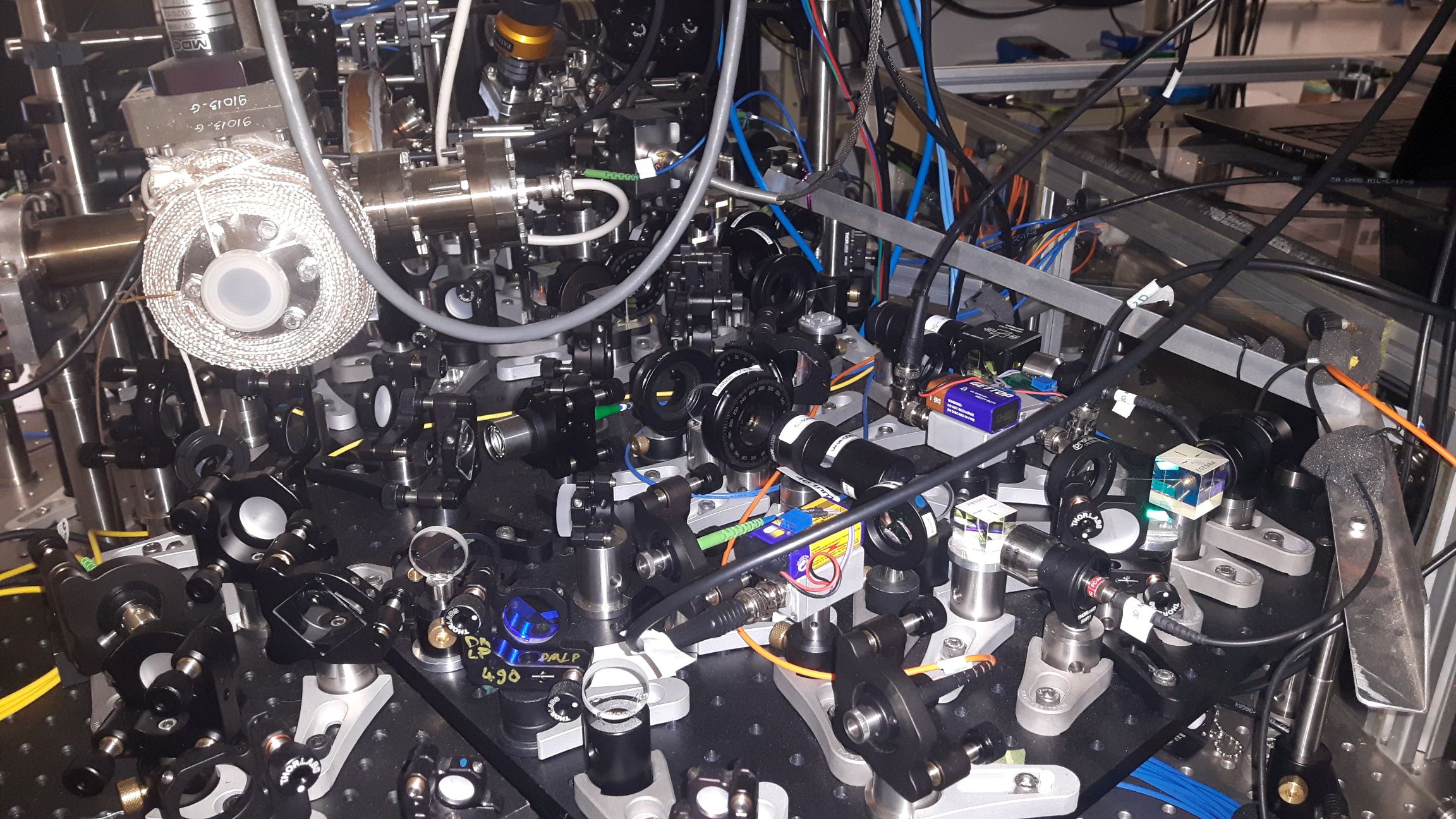 the viability of ring cavities to monitor gravity-induced Bloch oscillations.
the viability of ring cavities to monitor gravity-induced Bloch oscillations.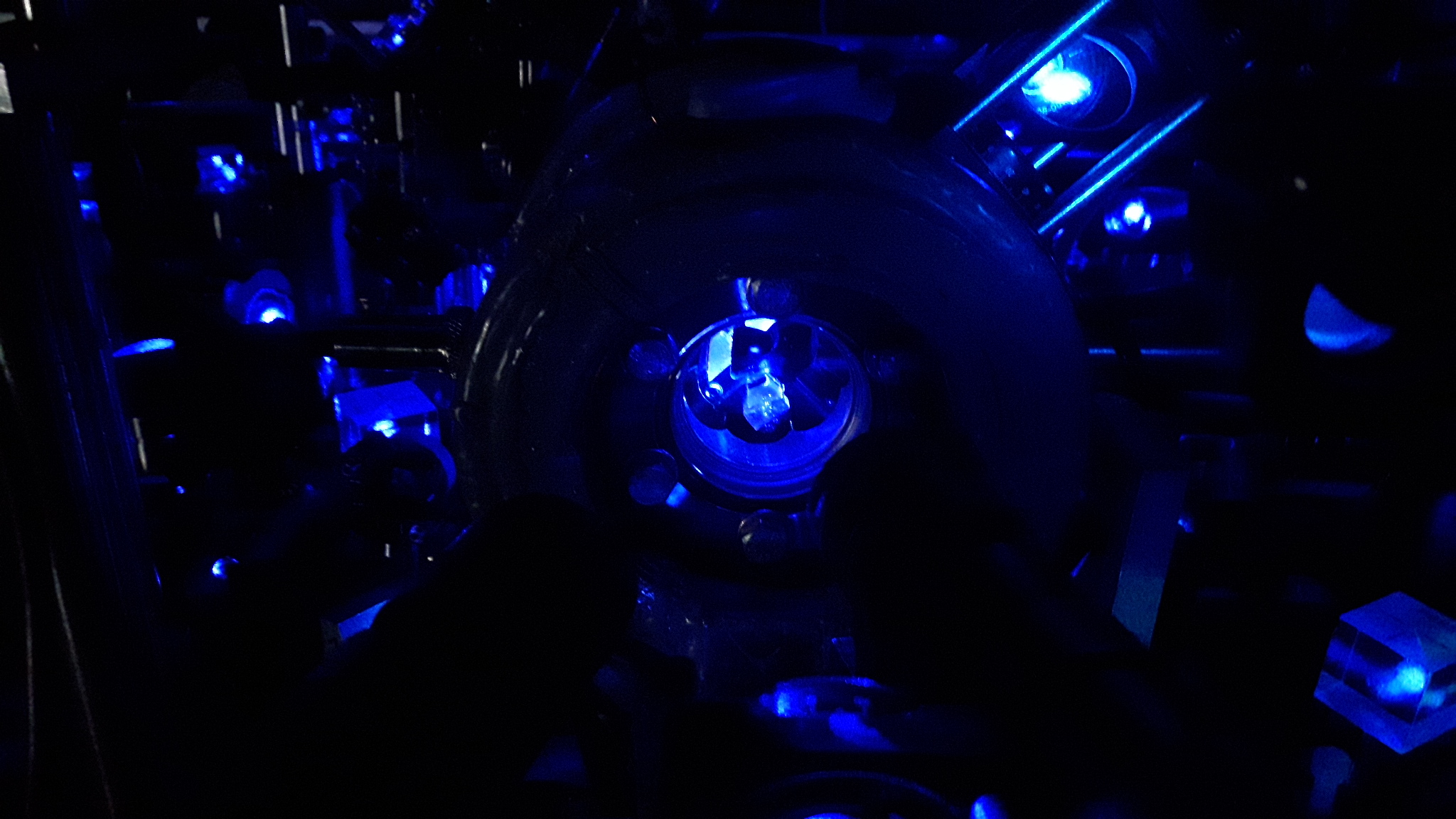
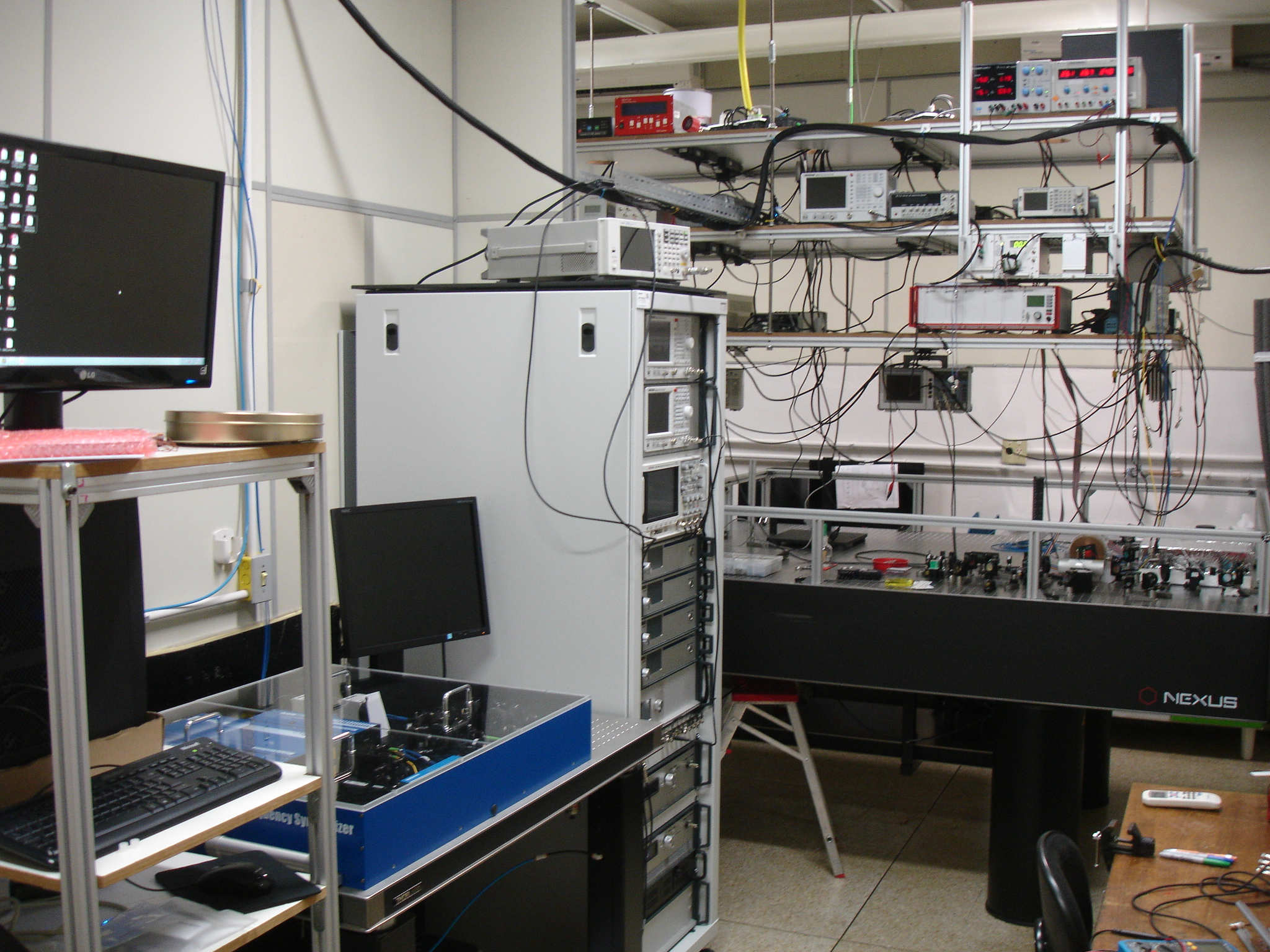 are among the hottest candidates for optical frequency standards. By means of a frequency comb recently acquired by our lab,
we plan to link the optical frequency regime to the microwave regime, where we can compare to our cesium atomic fountain clock
[Martin Júnior18].
are among the hottest candidates for optical frequency standards. By means of a frequency comb recently acquired by our lab,
we plan to link the optical frequency regime to the microwave regime, where we can compare to our cesium atomic fountain clock
[Martin Júnior18].